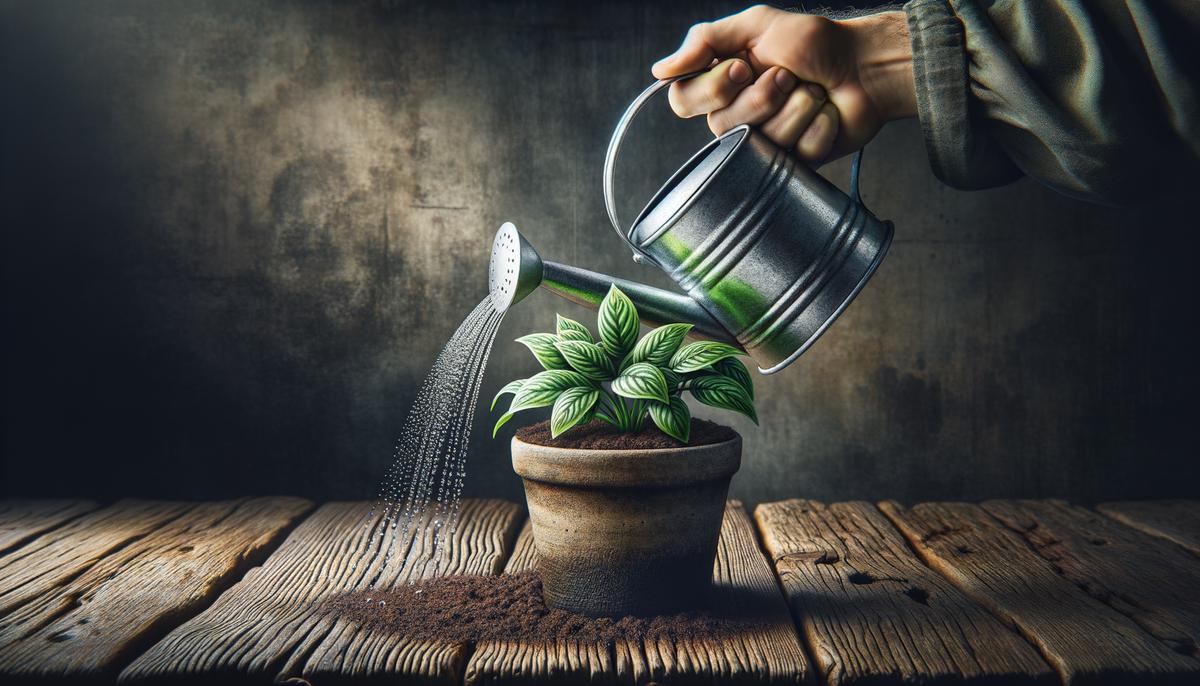Keep Your Plants Thriving!🌿How Often to Water Your Potted Plants in Winter and Summer!

Assessing Water Needs Seasonally
Understanding How Water Requirements for Potted Plants Shift from Winter to Summer
As seasons change, so do the water needs of your potted plants. Moving from the cold months into the warmer days of summer requires you to adjust your watering habits. By understanding the basics of this transition, you can help ensure your plants stay hydrated and healthy throughout the year.
Why the Shift Happens:
In the winter, your plants enter a dormant phase. Their growth slows down and their water needs decrease. Your home also tends to be cooler and might have lower humidity, meaning the soil stays moist longer. Less frequent watering is necessary.
Summer changes things. Temperature rises, and so does the growth rate of your plants. They’re becoming more active and need more water. As they grow and cope with warmer air, they require more frequent watering.
Winter Watering Tips:
- Water your plants only when the soil feels dry an inch below the surface.
- Once every couple of weeks might suffice, but this varies by plant. Use a moisture meter if you’re unsure.
- Even if plants are in a sunny spot, their water needs are lower in winter.
Summer Watering Tips:
- Check the soil’s moisture weekly. The top inch should be dry before watering.
- Watering your plants once a week is usually a good starting point, but adjust as needed.
- Plants in direct sunlight will need water more often. Check them mid-week to see if they need an extra watering.
Perfecting the Watering Technique:
- Water thoroughly, ensuring it reaches the deep roots to encourage strong growth. Ensure proper drainage.
- Use room temperature water that’s been left out overnight. Avoid hot or cold water.
- Outdoor conditions affect indoor environments. Hot days might dry your air out faster at home, increasing the watering needs of your plants.
Adapting from winter to summer watering requires attentive care. Observe your plants’ behavior and soil moisture to adjust to their needs.1 Whether it’s reducing winter watering or providing more frequent summer waterings, understanding these shifts will help keep your potted plants healthy year-round.

Measuring Water for Plants
Determining the exact amount of water in milliliters (mL) that your plants need daily can be challenging because every plant has unique requirements. However, we can follow some general tips to ensure your plants receive the proper hydration they need. Remember, while I provide a general guide, you should adjust these amounts based on your plant’s specific needs and the environmental conditions of your home.
The size of your plant and its pot plays a significant role in determining how much water it needs. Smaller pots and plants usually require less water compared to larger ones. For small to medium plants (ranging from 6 to 12 inches in height), starting with a baseline of around 100 to 200 mL of water daily is a good rule of thumb.2 This amount helps keep the soil moist without overwatering.
For larger plants over 12 inches in height, they have greater water needs due to their extensive root systems and larger leaf area. For these plants, consider increasing the water to about 250 to 500 mL daily. This increased volume helps replenish water lost through transpiration and supports their larger size.
These are starting points. Factors like the type of plant, humidity levels, sunlight exposure, and soil type can affect how much water your plant actually needs. Succulents and cacti, being adapted to dry conditions, thrive on much less water. You might find they only need watering once a week with about 50 to 100 mL.
Seasonal changes also influence your watering routine. During the colder months, when plant growth typically slows and indoor air can be drier due to heating, your plants might need slightly more water. Adding an extra 50 mL on your usual winter watering days can help offset the effects of dry indoor air.
For seedlings or young plants, they usually require consistently moist soil to support their growth. Providing a daily watering range of 50 to 150 mL helps maintain the ideal moisture levels their developing roots need.
Closely monitoring your plants is essential to effectively make these adjustments. Watch for signs of over or under-watering (yellowing leaves, wilting, dry or soggy soil) and adjust your watering amounts accordingly. Using a moisture meter can provide precise moisture readings of your soil.
While the mL guidelines above serve as a baseline for daily watering, always observe your plants’ responses and adjust based on their needs. This personalized approach helps ensure your plants stay healthy under your care.

Techniques for Watering Plants
Watering Beyond the Basics: Decoding Your Plant’s Thirst Signals
Water is essential for plant life, just as hydration is crucial for us. Understanding your plant’s unique watering needs is key to helping them thrive. Every plant has different requirements, so paying attention to their signals is important.
Interpreting Plant Signs
Plants communicate their well-being through visible signs:
- Droopy Leaves: Often a sign of under-watering, but check the soil first as over-watering can also cause this.
- Crispy Edges: Brown, crispy leaf edges usually mean your plant is thirsty and the soil is dry.
- Yellowing: Yellow leaves might suggest too much water or poor drainage. If the soil is soggy, hold off on watering and consider improving drainage.
Achieving Optimal Soil Moisture
Proper soil moisture is important for plant health. Here’s how to get it right:
Step 1: The Finger Test – Insert a finger into the soil up to the second knuckle. If it feels dry at that depth, it’s time to water. A moisture meter can provide a more precise reading.
Step 2: Weight Check – Lift the pot before and after watering. A heavier pot indicates sufficient water, while a lightweight one suggests it’s time to water.
Catering to Different Plant Types
Succulents and Cacti: These desert plants prefer thorough soakings followed by periods of drying out. Water sparingly in cooler months.
Tropical Plants: Humidity-lovers like peace lilies and philodendrons prefer consistently moist (not saturated) soil. Regular misting can be beneficial.
Seedlings: These young plants require gentle care. Keep the soil evenly moist to encourage strong root development without overwatering.
Developing a Custom Watering Routine
Establish a routine tailored to your plant’s needs, considering factors such as light exposure, seasons, and growth stages:
- Observe and Adjust: Monitor your plant’s reaction after watering and adjust amounts and frequency based on its health.
- Seasonal Adaptations: Plants require more water during their growth season (spring and summer) and less during dormancy (fall and winter).
- Ensure Proper Drainage: Good drainage is crucial to avoid root rot.3 Ensure your pots have adequate drainage holes.
Remember, there’s no universal rule for watering; it’s about observing and adjusting based on your plant’s needs. By giving your plants the appropriate amount of water they require, you can help them thrive under your care.

Developing the skill of proper watering is important for any plant enthusiast looking to maintain healthy indoor plants. By paying attention to your plants’ signals and adjusting your routines as needed, you can create an environment where your plants can thrive.
Keep in mind that each plant has its own specific needs that may change with the seasons or as they grow. Staying attentive to these changes and responding accordingly will help you become a more effective plant caretaker.
- Bender DA. Watering houseplants: Plant watering and moisture requirements. University of Illinois Extension. Published 2019.
- Pennisi SV. Houseplants: Proper care and management of pest problems. University of Georgia Extension. Published 2020.
- Colby-Bottel ML. Watering Plants Properly. The University of Arizona Cooperative Extension. Published 2017.
